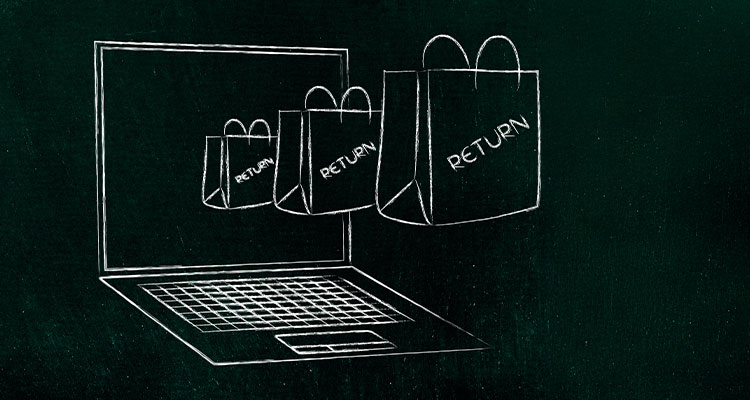Meeting consumers’ desire for better processes
Welcome to the world of retail returns, an expensive, cumbersome – yet essential – part of the industry. The number of returns is growing and managing them is critically important to maintaining margins and customer satisfaction. Consider these facts: total returns amounted to $743 billion in merchandise in 2023 and in 2022; approximately 16.5 percent of all purchased goods were returned to retailers.
Returns negatively impact brands in several ways including processing costs, shipping fees, unsellable merchandise and more. With the growth in ecommerce and higher consumer expectations for convenience, it is essential for retailers make returns processes as efficient as outbound fulfilment.
First, let’s get a profile of the modern shopper. Customers today want consistent, personalized experiences across channels with multiple payment options and faster refunds. They also expect products to be available where, how and when they want them, which is only possible through a truly omnichannel approach on a single technology platform.
The same increased expectations also apply to returns – customers want to return items in the manner most convenient to them. Making those processes as customer friendly as possible helps deliver positive, post-purchase experiences that build trust and loyalty. As an example, Walmart offers curbside returns; doorstep returns for loyalty members; and even in-home return collection for those signed up for their InHome programme.

In a report from Radial, the average return costs retailers an estimated $27 on a $100 ecommerce order. And of all returned merchandise, only 30 percent is ever resold. Leveraging the right technology can help retailers to reduce those impacts. For example, optimizing where each return shipment is routed can minimize shipping costs, prevent cross-border shipments, and even enable you to route items to stores low in stock or with higher demand. Many retailers implement robust, intelligent algorithms to optimize the sourcing of their outbound shipments; why not give that same love to your return shipments?
Similarly, in this era of workforce shortage, automation can help lessen the need for customer service agent intervention. Often when a refund fails, agents must attempt to reprocess each transaction individually or contact the customer for a new payment method – very manual and time-consuming processes. With the right technology, refund failures can be resolved without an agent involved – the application can execute retries automatically. If that still doesn’t work, it can send the customer a link to enter a new payment method using Pay by Link.
Charging customers for returns is becoming a growing practice. However, doing so can be a deterrent for shoppers, impacting conversion and even sending them to other brands. According to a report by Deloitte, 67 percent of consumers check the return policy before purchasing an item and 74 percent of people will be deterred from making a purchase due to returns shipping fees. Instead of passing those costs along to customers, retailers have the opportunity to cut costs in other areas like return shipping costs, cross-border fees, and replenishment costs, while protecting the precious customer experience.
That’s important given the same report also revealed that 96 percent of consumers would shop again with a retailer based on a good returns experience. In addition, another report from McKinsey & Company revealed that 33 percent of repeat consumers would choose to abandon a retailer if they had a ‘difficult’ returns experience.
A final consideration in reverse logistics is to see it not as a burden, but instead an opportunity for differentiation. Providing exceptional self-service tools for your customers can give your brand an edge over your peers. Self-service options have become increasingly popular among consumers, who are more comfortable than ever with technology, and want independence in resolving their own queries and issues. But while customers should have the option to return and exchange themselves, retailers need to make the most of every customer interaction by driving sales – and the right technology can enable that!
Ultimately, a bad returns experience can do significant damage to the customer-retailer relationship. To avoid this – especially around holidays – brands must provide returns experiences which delight customers as much as their shopping experience. And they must do it without breaking the bank. That means finding ways to optimize return shipment routing and drive exchange conversion. Providing transparent return policies, expedited refunds, easy exchanges, and self-service options can serve as selling points, driving higher sales, and strengthening consumer loyalty – the ultimate goal in this ever-changing era of retail!
For a list of the sources used in this article, please contact the editor.
By Ellie Crawford
Ellie Crawford is Director of Product Management at Manhattan Associates, a global technology leader in supply chain and omnichannel commerce. It unites information across the enterprise, converging front-end sales with back-end supply chain execution. Its software, platform technology and unmatched experience help drive both top-line growth and bottom-line profitability for customers.
